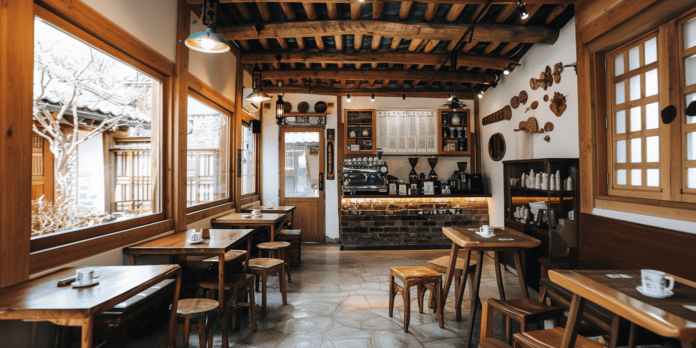Korean coffee culture is unique and vibrant, with a rich history that continues to evolve. Today, Korea is one of the top coffee-consuming countries in the world, attracting numerous tourists eager to experience its diverse coffee scenes. Let’s explore how coffee culture began in Korea and what makes it so appealing.
The Introduction and History of Coffee in Korea
Coffee was first introduced to Korea in the late 19th century. King Gojong, the 26th king of the Joseon Dynasty, reportedly first tasted coffee in 1896 at the Russian Legation. After this introduction, coffee began to be served in the royal court. The American astronomer Percival Lowell also documented his coffee experience in Korea in 1884, highlighting the early stages of coffee consumption in the country. From then on, coffee gradually spread among the upper class.
Modern Korean Coffee Culture
Korean coffee culture began to gain popularity in the 1960s with the introduction of instant coffee. In 1976, Dongsuh Foods developed the world’s first instant coffee mix containing sugar and creamer, making coffee more accessible to everyone.
The opening of the first Starbucks in Korea in 1999 marked the beginning of the modern cafe culture. Alongside Starbucks, local coffee chains like Hollys and Ediya emerged, and today, numerous independent coffee shops can be found on every corner. These cafes have become multi-functional spaces where people gather to chat, study, and work.
Types of Cafes in Korea
Korean cafes come in various themes and atmospheres, offering visitors a wide range of experiences. Here are some of the different types of cafes you can find in Korea:
1. Affordable Coffee Chains
Affordable coffee chains cater to budget-conscious office workers and students. Examples include Ediya Coffee, Compose Coffee, and Paik’s Coffee. These chains offer a variety of drinks at reasonable prices, making them popular choices for many. Their quick service and affordable prices are highly appreciated by customers.
2. Franchise Coffee Shops
Franchise coffee shops like Starbucks, Hollys, A Twosome Place, and Angel-in-us can be found nationwide. These cafes offer consistent quality and a diverse menu, providing a comfortable environment to spend time. Free Wi-Fi and ample seating make them ideal for studying or working.
3. Independent Coffee Shops
Independent coffee shops boast unique atmospheres and distinctive charm. These cafes often reflect the character of their local areas, offering a special experience. High-quality coffee, such as hand-drip or single-origin coffee, can be enjoyed here, and the baristas’ dedication is evident in every cup.
4. Themed Cafes
Themed cafes are another integral part of Korean coffee culture. Examples include pet cafes, board game cafes, and character cafes. At pet cafes, you can spend time with animals like cats and dogs. Board game cafes provide a space to play games with friends, while character cafes feature popular animations or themes. These cafes offer more than just coffee; they provide a variety of activities and fun experiences.
Conclusion
Korean coffee culture is characterized by its history and diversity, offering a unique and appealing experience. Cafes in Korea are not just places to drink coffee but also social hubs where experiences and interactions are important. Tourists visiting Korea are highly encouraged to explore its diverse cafes and experience the charm of Korean coffee culture firsthand.

